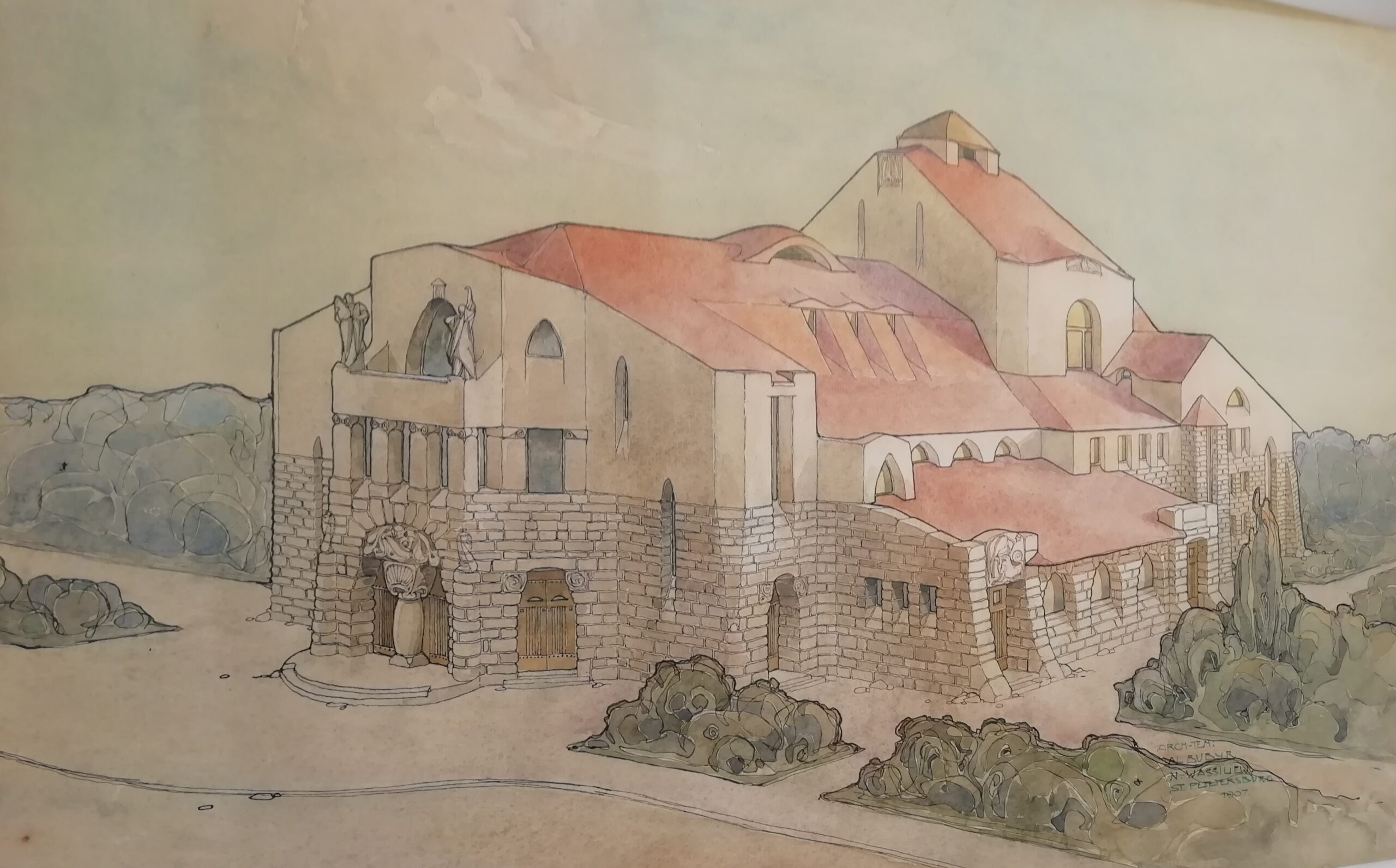ESTONIAN THEATRICAL BUILDINGS
Floor
17.05. – 22.09.2024

Drawing by St. Petersburg architects Aleksei Bubõr (1876-1919) and Nikolai Vassiljev (1975-1958) who won the architectural competition of the Tallinn German Theater in 1907. Watercolor. Archives of the Estonian Museum of Architecture.
The exhibition brings Estonian theatre architecture into the limelight – starting in early 19th century with birch-decked barns and ending with projects for 21st century theatre buildings. It shows the genesis of a typology, in the context of the national awakening movement and the birth of professionalperforming arts.
Professional theatre architecture in Estonia can be traced from the beginning of the early 20th century when two magnificent theatre buildings and Estonian national symbols were built. Both these, Vanemuine in Tartu (1906) and Estoniain Tallinn (1913), were planned by Finnish architects.
Theatre houses for Võitleja in Narva (1908), Endla in Pärnu (1911), Säde in Valga, (1911) and Koit in Viljandi (1911) were designed by local architects. Also influential was the architecture of the local German theatres designed by foreign professionals.
In 1920s–1930s extension projects were designed for several Estonian theatres. A new theatre house was planned but never built in both Võru and Viljandi, and these plans are on display for the first time ever. Before World War II, only two projects were completed – the new theatre hall for Vanemuine in Tartu and the Rakvere theatre house.
The buildings of Estonia, Vanemuine, Endla and Võitleja theatres were all severely damaged during the war; of these only Estonia was restored. From the Soviet period there are just three new theatre houses – Vanemuine in Tartu, Endla in Pärnu, and Ugala in Viljandi.
Since the restauration of Estonian statehood in 1991 the old theatre buildings have been carefully renovated. However, no new theatres have been constructed, only a few black box theatres. The long process of reconstructing the Tallinn City Theatre in Tallinn Old Town is still ongoing, and a hot//heated debate on the future of the Estonian National Opera still continues.
The exhibition brings out a lot of historical, well-known and lesser-known material, and is complemented by Karin Hallas-Murula’s newly published book „Estonian Theatre Buildings: From barns decorated with birches to modern theatre architecture”.
The author of the exhibition is Karin Hallas-Murula
Exhibition design Pille Jänes
Graphical design Margus Tammik
Supported by Estonian Cultural Endowment


